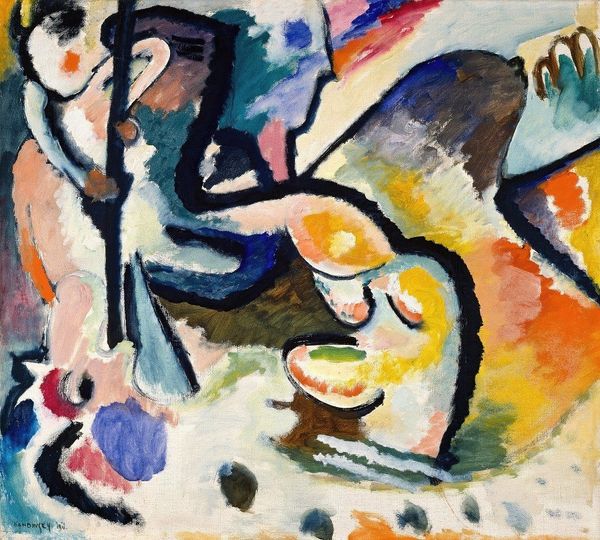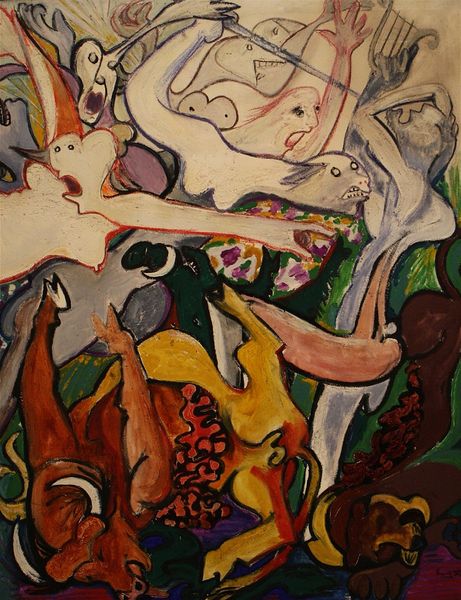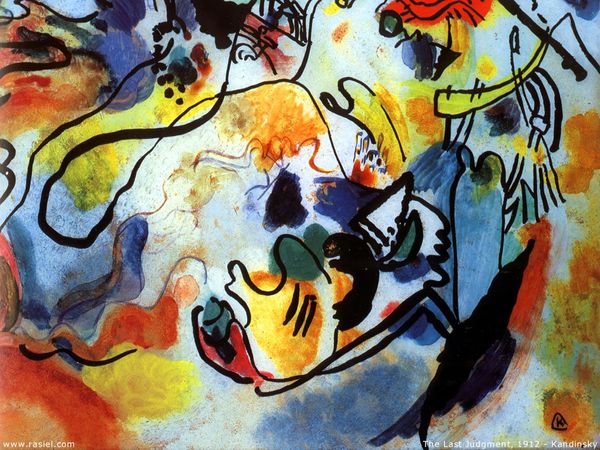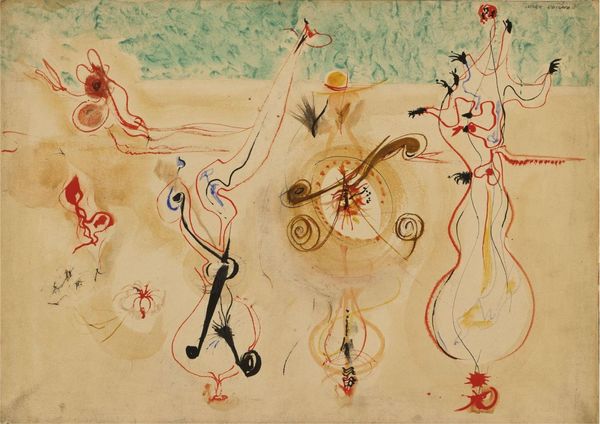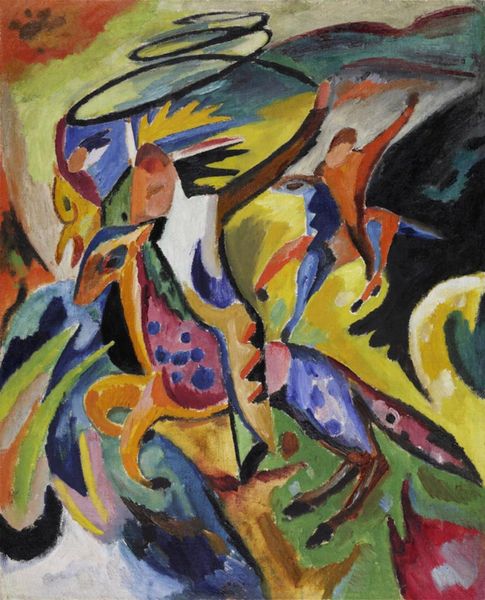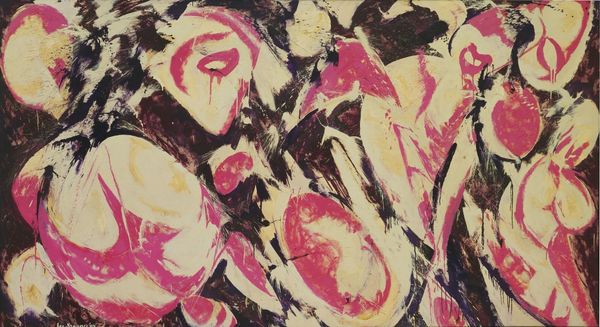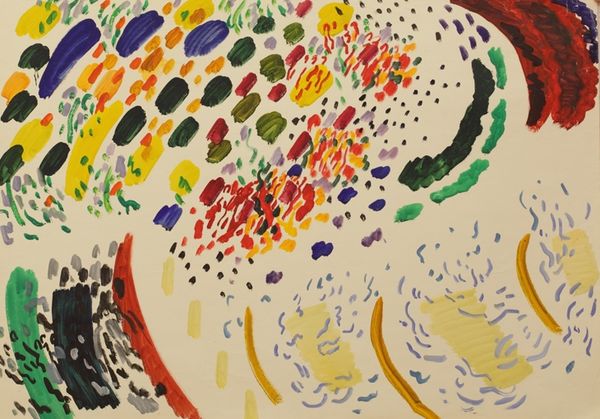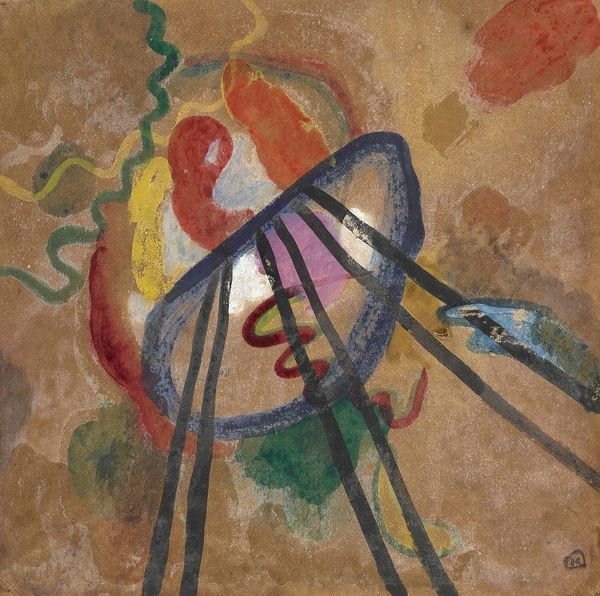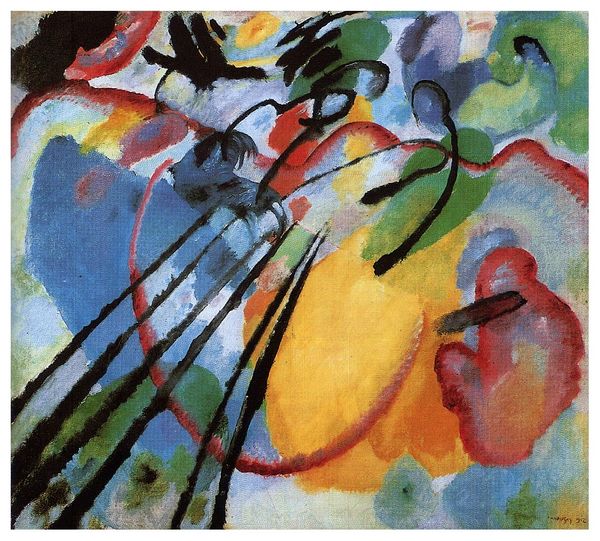
watercolor
#
abstract
#
watercolor
#
expressionism
Copyright: Public Domain: Artvee
Editor: Here we have Wassily Kandinsky's "Aquarell Nr. 8 ‘Jüngster Tag’", made with watercolor in 1911. The abstract forms and swirling lines give me a sense of chaos, yet there’s a delicate beauty in the translucence of the watercolors. What's your interpretation of it? Curator: The term ‘aquarell’ points directly to the material and the process. Looking at it materially, consider what watercolour on paper, particularly in 1911, would mean. Pigment suspended in water: readily available and relatively inexpensive to produce in workshops catering for industrial demand, such as in Bavaria where Kandinsky lived. And yet, he elevates the readymade. What do you think? Does it retain the stamp of the factory? Editor: I hadn’t thought about the economic dimension of art supplies then. Seeing the watercolour now as more of an industrial material rather than a purely artistic one definitely adds another layer! Still, the artwork evokes a definite visual, even spiritual mood to me. Is that possible given this factory perspective? Curator: Perhaps. Think about the paper, too. Was it handmade or mass-produced? The support has a social context that contributed to the production. Also the labour: what do we know about who ground the pigments? About how paint was processed? About distribution networks? Watercolour allowed experimentation as never before. Did its accessibility liberate Kandinsky? Editor: It seems like it allowed for the artwork to be accessible by a greater consumer market but still retained some type of artistic element by showcasing something the everyday person might not normally look for. What did watercolour on paper do for Kandinsky in particular? Curator: We can see it allowed for bold and interesting choices, even while engaging with ready made materials. Now think: How did its means of production impact Kandinsky's ability to innovate artistically, and challenge existing social conventions or boundaries around art making at the time? Editor: Thinking about it in terms of the industrial processes that underpinned it definitely makes me appreciate Kandinsky's skill in manipulating those materials, of how it changes the very art establishment. Thanks for broadening my perspective on it.
Comments
No comments
Be the first to comment and join the conversation on the ultimate creative platform.
